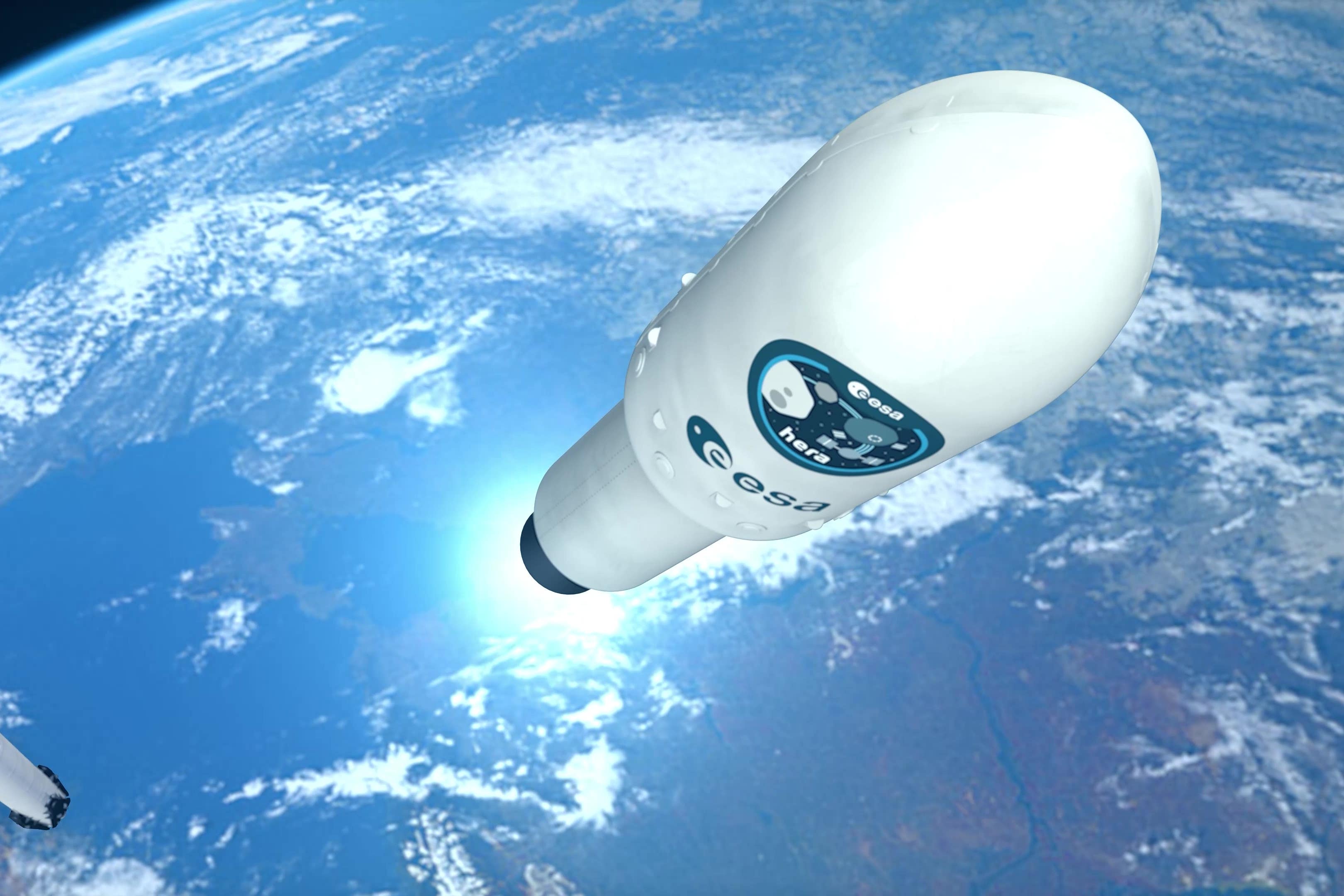Rocket blasts off into space to investigate asteroid crash site
In September 2022, Nasa’s Double Asteroid Redirection Test (Dart) spacecraft collided with Dimorphos in the first test of deflecting an asteroid.

A rocket has blasted off into space on a mission to discover what happened when a spacecraft intentionally crashed into a small asteroid.
Hera is a planetary defence mission from the European Space Agency (Esa) that will investigate the Dimorphos asteroid.
In September 2022, Nasa’s Double Asteroid Redirection Test (Dart) spacecraft collided with Dimorphos in the first test of deflecting an asteroid, to see if this method could be used to deflect objects which could one day pose a threat to Earth.
The Hera mission will perform a detailed post-impact survey of Dimorphos, looking at things like the kind of crater caused by the impact, and whether it changed the shape of the asteroid.
Hera launched to cheers aboard a SpaceX Falcon 9 rocket from Cape Canaveral in Florida at 3.52pm.
The mission will have a two-year cruise phase.
An initial deep space manoeuvre in November will be followed by a Mars flyby that will offer a rare view of Mars’s moon Deimos in March 2025.
A second deep space manoeuvre in February 2026 will line Hera up for arrival at the Didymos binary asteroid system.
In October 2026 the spacecraft will enter the vicinity of the asteroid system in order to enter its orbit.
Dimorphos is part of a binary asteroid system and orbits Didymos.
Mike Willis, space environment programme leader at the UK Space Agency, said: “We face many hazards originating from space, including solar activity, space debris and asteroids.
“While a large asteroid strike is incredibly unlikely in the next 200 years, the Hera mission will deliver valuable science by travelling to the Didymos asteroid, studying it, and developing new technologies along the way.
“As a major supporter of ESA’s space safety programme, we look forward to seeing the results of the Hera mission and playing a key role in future work to help protect our planet from space risks.”
The findings from Hera will go hand-in-hand with the Esa’s Ramses mission in 2029 which will meet up with the asteroid 99942 Apophis and accompany it through its safe but exceptionally close flyby of Earth.
Researchers will study the asteroid as Earth’s gravity alters its physical characteristics.
Their findings will improve our ability to defend our planet from any similar object found to be on a collision course in the future.
There are currently somewhere around 27,000 asteroids in near-Earth orbit.
Rocks that are 140 metres (460ft) and larger in size and come nearer than 4.7 million miles (7.5 million km) during orbit are classed as potentially hazardous asteroids (PHAs).
The Dart mission was the first ever full-scale demonstration of asteroid deflection technology.